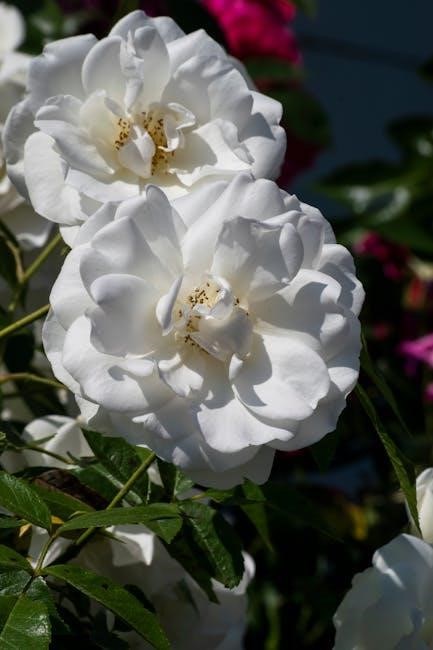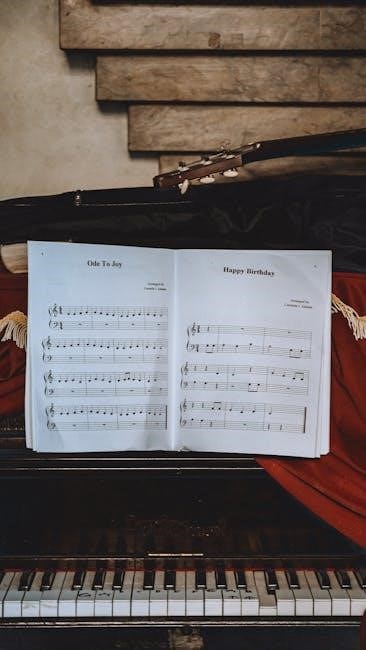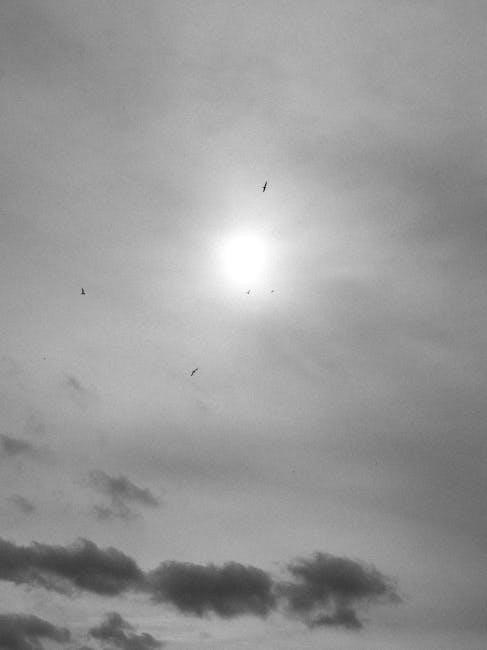Ode to a Nightingale: A Comprehensive Exploration (PDF Focus)
Access detailed analyses, scholarly articles, and study guides for Keats’ “Ode to a Nightingale” conveniently compiled in readily available PDF formats online.

John Keats’ “Ode to a Nightingale,” penned in 1819, remains a cornerstone of Romantic poetry, deeply exploring themes of mortality and beauty. This poem, born from a fevered summer and Keats’ own awareness of fragility, invites profound meditation on the human condition. Fortunately, a wealth of resources exists for students and enthusiasts seeking deeper understanding.
Numerous PDF versions of the poem, alongside critical analyses and study guides, are readily accessible online. These PDFs offer convenient access to textual interpretations, paraphrases, and summaries. They are invaluable for close reading, textual analysis, and preparing for examinations like AP Literature. Finding reliable PDFs ensures access to accurate scholarship and facilitates a comprehensive exploration of this timeless work.
Historical Context: 1819 & Romanticism
1819, the year of the poem’s creation, was a period of significant social and political upheaval following the Napoleonic Wars. This era deeply influenced the Romantic movement, emphasizing emotion, imagination, and individualism – all central to Keats’ work. The availability of “Ode to a Nightingale” in PDF format allows for convenient study alongside historical texts from the period.
Romanticism rejected the Enlightenment’s focus on reason, instead celebrating the power of nature and subjective experience. Examining the poem through this lens, aided by accessible PDF study guides, reveals Keats’ engagement with core Romantic ideals. These PDF resources often contextualize the poem within the broader literary and philosophical currents of the time, enhancing comprehension.

John Keats: Biography & Influences
John Keats, a pivotal figure in English Romanticism, faced personal tragedy and illness throughout his short life, profoundly shaping his poetic vision. Understanding his biography – readily available through online resources and often summarized in PDF biographical sketches – illuminates the themes of mortality and beauty prevalent in “Ode to a Nightingale.”
Keats was heavily influenced by classical literature, particularly Greek mythology, and the works of earlier poets like Shakespeare and Milton. PDF analyses frequently explore these influences, demonstrating how Keats synthesized tradition with his unique sensibility. Accessing these PDF resources provides a deeper appreciation for the poem’s allusions and artistic lineage, enriching the reading experience.

Analyzing the Text of “Ode to a Nightingale”
Explore detailed stanza-by-stanza breakdowns and critical interpretations of Keats’ poem, often found conveniently packaged within comprehensive PDF study guides.
Stanza 1: Initial State & Sensory Overload
PDF resources dedicated to Keats’ “Ode to a Nightingale” frequently begin by dissecting the poem’s opening stanza, highlighting the speaker’s initial state of “drowsy numbness.” These guides often detail how this sensation isn’t pleasant, but rather a semi-conscious state induced by the nightingale’s song.
Annotations within these PDFs pinpoint the intense sensory experience – a feeling akin to having ingested hemlock or drunk a potent opiate. Scholars’ commentary, accessible through these documents, emphasizes the paradoxical nature of this opening: a joyful stimulus causing a feeling of near-death. PDF study aids often include close readings of key phrases, explaining how Keats establishes a tone of both ecstasy and melancholy from the very first lines, setting the stage for the poem’s exploration of mortality and beauty.
Stanza 2: Desire for Wine & Escape
PDF analyses of “Ode to a Nightingale” consistently focus on the second stanza’s yearning for wine – a “draught of vintage” – as a means of escaping the burdens of human existence. These resources explain how the speaker desires to leave behind the world of suffering and join the nightingale in its carefree existence.
Scholarly PDFs detail how this desire isn’t simply for intoxication, but for a temporary transcendence, a flight from awareness of mortality. Annotations often highlight the specific wines mentioned – “Flora and the country green” – and their associations with classical mythology and pastoral beauty. PDF study guides frequently explore the irony of seeking escape through artificial means, foreshadowing the poem’s later questioning of the validity of such illusions.
Stanza 3: Confronting Human Suffering
PDF resources dedicated to Keats’ “Ode to a Nightingale” emphasize how the third stanza starkly contrasts the idealized world of the bird with the harsh realities of human life. Detailed analyses within these PDFs highlight the speaker’s enumeration of suffering – “the weariness, the fever, and the fret” – as a direct response to the nightingale’s joyous song.
Scholarly commentaries, often available as PDF downloads, explore how this stanza reflects Keats’ personal experiences with illness and loss. Study guides in PDF format frequently point out the poem’s exploration of mortality and the inevitability of pain. PDF annotations often dissect the imagery of aging and disease, revealing Keats’ profound empathy for human vulnerability.
Stanza 4: The Power of Imagination & Death
PDF study materials on Keats’ “Ode to a Nightingale” reveal how the fourth stanza explores the allure of escaping earthly suffering through imagination and, ultimately, death. Annotated PDFs often highlight the speaker’s desire to “fade away” with the nightingale, embracing a painless oblivion.
Critical analyses, frequently found as PDF downloads, dissect the complex relationship between imagination and mortality presented in this stanza. PDF resources emphasize how the speaker envisions death not as a frightening end, but as a release from pain. Detailed guides in PDF format explore the poetic devices used to convey this longing, such as the imagery of wine and darkness.
Stanza 5: Darkness & Sensory Deprivation
PDF resources dedicated to Keats’ “Ode to a Nightingale” illuminate how the fifth stanza plunges the speaker into a world of complete darkness and sensory deprivation. Annotated PDFs pinpoint the speaker’s reliance on imagination to navigate this absence of sight, smell, and touch.
Scholarly PDFs often analyze how this stanza represents a descent into the subconscious, a realm where the imagination reigns supreme. Study guides in PDF format detail the significance of the speaker’s attempt to experience the nightingale’s world solely through sound. PDF analyses reveal how this sensory deprivation intensifies the speaker’s emotional and philosophical reflections.
Stanza 6: The Nightingale’s Immortality
PDF study materials focusing on “Ode to a Nightingale” highlight the contrast between human mortality and the nightingale’s seemingly eternal existence, explored in stanza six. Digital PDFs often dissect how Keats uses the bird’s song as a symbol of timeless beauty and enduring art.
Annotated PDFs reveal the speaker’s envy of the nightingale’s freedom from human suffering and the constraints of time. Scholarly PDFs analyze the connection to Greek mythology, where the nightingale’s song is linked to immortality. PDF resources emphasize how this stanza explores the power of art to transcend death and achieve a form of lasting legacy.
Stanza 7: The Nightingale’s Song & Transcendence
PDF analyses of “Ode to a Nightingale” demonstrate how stanza seven depicts the speaker’s complete immersion in the nightingale’s song, achieving a state of transcendence. Digital resources often showcase how Keats employs vivid imagery to convey this sensory experience, readily available in PDF format.
Annotated PDFs pinpoint the shift from earthly concerns to a realm of pure aesthetic experience. Scholarly PDFs explore the Romantic ideal of using imagination to escape reality. PDF study guides emphasize how the song facilitates a temporary release from mortality and suffering, offering a glimpse of something beyond the human condition.
Stanza 8: Awakening & Uncertainty
PDF resources dedicated to Keats’ poem highlight how the final stanza marks a jarring return to reality for the speaker. Digital analyses, often found in PDF form, detail the speaker’s questioning of whether the experience was a waking dream or a genuine transcendence.
Annotated PDFs reveal the ambiguity surrounding the nightingale’s departure and the fading of its song. Scholarly PDFs explore the poem’s exploration of the limitations of imagination and the difficulty of sustaining ecstatic states. PDF study guides emphasize the lingering uncertainty, leaving the reader to ponder the nature of beauty and the human condition.

Key Themes in “Ode to a Nightingale”
PDF analyses reveal central themes: mortality, beauty’s transience, nature’s inspiration, imagination’s role, and escapism—all explored within the poem’s digital texts.
Mortality & the Human Condition
PDF resources dedicated to Keats’ “Ode to a Nightingale” consistently highlight mortality as a core theme. The poem grapples with the inevitability of death and the suffering inherent in the human condition, offering a poignant reflection on life’s fleeting nature.
Scholarly PDFs dissect how Keats contrasts the nightingale’s seemingly immortal song with the transience of human existence, marked by pain, aging, and loss. These digital analyses reveal the speaker’s yearning for escape from earthly woes, a desire fueled by awareness of his own mortality and, potentially, his declining health.
Furthermore, PDF study guides often emphasize how Keats uses imagery of decay and fading beauty to underscore the poem’s exploration of human vulnerability and the limitations of earthly life, making it a timeless meditation on what it means to be human.
The Transience of Beauty
PDF analyses of Keats’ “Ode to a Nightingale” frequently explore the poem’s poignant depiction of beauty’s fleeting nature. The nightingale’s song embodies an ideal beauty, yet even this is contrasted with the impermanence of earthly delights and youthful vigor.
Digital resources, often available as PDF study guides, reveal how Keats employs vivid imagery – flowers, scents, and moonlight – to represent beauty, while simultaneously acknowledging its inevitable decay. These PDFs highlight the speaker’s awareness that all beautiful things must fade, contributing to the poem’s melancholic tone.
Scholarly PDFs also demonstrate how Keats links the transience of beauty to the human condition, suggesting that our appreciation of beauty is heightened because of its impermanence, making the poem a powerful meditation on loss and remembrance.
Nature as a Source of Inspiration
Numerous PDF resources dedicated to “Ode to a Nightingale” emphasize nature’s pivotal role as a catalyst for the speaker’s imaginative journey. The nightingale itself, a creature of the natural world, sparks profound reflections on life, death, and artistic creation.
PDF study guides dissect how Keats utilizes detailed descriptions of the natural environment – forests, flowers, and the moonlit sky – to evoke specific emotions and ideas. These analyses reveal nature isn’t merely a backdrop, but an active force inspiring the poem’s central themes.
Scholarly PDFs further illustrate how Keats’ Romantic sensibility views nature as a source of solace and transcendence, offering an escape from human suffering and a glimpse into a realm of timeless beauty and inspiration.

The Role of Imagination & Art
PDF analyses of “Ode to a Nightingale” consistently highlight the poem’s exploration of imagination as a powerful, yet potentially deceptive, force. Keats’ work, readily available in PDF format, demonstrates how art—specifically poetry—can offer both escape and insight.
Study guides in PDF form detail the speaker’s fluctuating relationship with the nightingale’s song, representing an artistic ideal. The poem questions whether imaginative experience is superior to, or merely a distraction from, the realities of human existence.
Scholarly PDFs reveal how Keats uses poetic devices to mimic the very process of imaginative creation, blurring the lines between reality and illusion, and ultimately examining art’s capacity to both console and confound.
Escapism & the Desire for Oblivion
PDF resources dedicated to “Ode to a Nightingale” frequently analyze the speaker’s yearning for escape from human suffering, a central theme explored through the nightingale’s song. These PDF study guides reveal a desire for oblivion, a release from the pain of mortality and the burdens of consciousness.
Critical analyses, often found in PDF format, demonstrate how the poem utilizes imagery of wine, darkness, and death as symbolic pathways to transcend earthly woes. The speaker contemplates a merging with the nightingale’s world, a realm seemingly untouched by human sorrow.
However, PDF commentaries also note the poem’s ultimate acknowledgement of the impossibility of complete escape, highlighting the bittersweet nature of imaginative flight.

Critical Appreciation & Scholarly Commentary
PDF documents offer diverse interpretations of the nightingale symbol, Keats’ illness, and Romantic ideals, enriching understanding of the poem’s depth.
Interpretations of the Nightingale Symbol
PDF-based scholarly articles dissect the nightingale as representing immortality, artistic beauty, and a realm beyond human suffering. Many PDF analyses explore how Keats utilizes the bird’s song to symbolize an escape from mortality, contrasting its eternal melody with the fleeting nature of human life.

Furthermore, PDF study guides often highlight interpretations linking the nightingale to the poetic imagination itself – a source of transcendent experience. Some commentaries, accessible in PDF format, suggest the bird embodies a purely aesthetic ideal, untouched by the pain and decay inherent in the human condition. Examining various PDF resources reveals a spectrum of perspectives, from the nightingale as a symbol of divine inspiration to a representation of nature’s indifference.
The Poem’s Relationship to Keats’ Illness
Numerous PDF resources detail how Keats’ declining health profoundly influenced “Ode to a Nightingale.” Scholarly PDF analyses connect the poem’s preoccupation with mortality and escape to Keats’ awareness of his own impending death from tuberculosis.
PDF study guides often emphasize the poem’s exploration of pain and the desire for oblivion as reflections of Keats’ physical suffering. The drowsy numbness in the opening lines, explored in detailed PDF commentaries, is frequently interpreted as a symptom of his illness or medication. Accessing these PDF documents reveals how Keats channeled his personal experience of fragility and loss into a universal meditation on the human condition, making the poem deeply poignant and autobiographical.
Romantic Ideals & Keats’ Poetry
PDF analyses consistently highlight how “Ode to a Nightingale” embodies core Romantic ideals. These PDF resources demonstrate Keats’ emphasis on imagination, emotion, and the sublime power of nature – hallmarks of the Romantic movement.
Detailed PDF study guides showcase Keats’ rejection of Enlightenment rationalism in favor of subjective experience and sensory perception. The poem’s focus on beauty, transience, and the individual’s relationship with the natural world, as explained in various PDF commentaries, aligns perfectly with Romantic principles. Exploring these PDF documents reveals how Keats utilizes vivid imagery and emotional intensity to express a longing for transcendence and a critique of societal constraints, central tenets of Romantic thought.
Influence of Greek Mythology & Literature
Numerous PDF resources detail the profound influence of Greek mythology and literature on Keats’ “Ode to a Nightingale.” These PDF analyses reveal allusions to classical tales of mortality and immortality, particularly the myth of Bacchus and the concept of Elysian Fields, explored within the poem’s verses.
Scholarly PDF commentaries demonstrate how Keats draws upon the aesthetic principles of ancient Greek art, emphasizing beauty and form. PDF study guides often highlight the poem’s echoes of classical odes, showcasing Keats’ deliberate engagement with literary tradition. Examining these PDF materials illuminates how Keats uses classical references to deepen the poem’s thematic resonance and explore universal human experiences, enriching the poem’s layers of meaning.

“Ode to a Nightingale” as a PDF Resource
PDF versions offer accessible, portable analyses of Keats’ poem, including annotations, study guides, and textual explorations for enhanced learning.
Finding Reliable PDF Versions Online
Locating trustworthy PDF resources for Keats’ “Ode to a Nightingale” requires careful navigation. Reputable academic databases, like JSTOR or university digital libraries, frequently host scholarly articles and critical analyses in PDF format. Websites such as SparkNotes and CliffsNotes also offer study guides available for download, though verifying their accuracy is crucial.
Beware of unofficial sources; prioritize PDFs from established educational institutions or peer-reviewed journals. Search terms like “Ode to a Nightingale PDF analysis,” “Keats poem study guide PDF,” or “Ode to a Nightingale scholarly articles PDF” can yield relevant results. Always check the source’s credibility before relying on the content, ensuring it aligns with academic standards and provides accurate interpretations of the poem;
Analyzing PDF Annotations & Study Guides
PDF study guides for “Ode to a Nightingale” often contain valuable annotations – highlighting key themes like mortality, beauty, and imagination. When analyzing these, critically assess the interpretations offered. Do the annotations support textual evidence? Are different critical perspectives represented?
Focus on understanding why certain lines are emphasized or interpreted in a specific way. Compare annotations across multiple guides to identify common themes and divergent viewpoints. Pay attention to explanations of poetic devices, rhyme schemes, and historical context. Use these guides as a starting point for your own close reading, forming independent conclusions about Keats’ masterful work, rather than passively accepting pre-packaged analyses.
Using PDFs for Close Reading & Textual Analysis
Digital PDF versions of “Ode to a Nightingale” facilitate focused textual analysis. Utilize PDF readers’ annotation tools – highlighting, underlining, and adding notes directly onto the text. This allows for a dynamic engagement with Keats’ language and imagery.
Focus on identifying patterns in diction, symbolism, and sound devices. Track the development of key themes throughout the poem’s eight stanzas. PDFs enable easy referencing and comparison of specific lines. Consider how the poem’s structure contributes to its overall meaning. By actively marking and analyzing the text within a PDF, you can deepen your understanding of Keats’ poetic artistry and the poem’s enduring power.
PDFs & Accessibility for Students
PDF formats offer significant accessibility benefits for students studying “Ode to a Nightingale.” Many PDF readers feature text-to-speech functionality, aiding students with visual impairments or reading difficulties. Adjustable font sizes and screen reader compatibility enhance readability.
Furthermore, PDFs can be easily shared and accessed across various devices – laptops, tablets, and smartphones – promoting flexible learning; Digital annotations allow students to collaborate and share insights. Ensure the PDFs used are properly tagged for accessibility, enabling screen readers to interpret the document’s structure effectively. This promotes inclusive learning and deeper engagement with Keats’ masterpiece.

Study Resources & Further Exploration
Discover AP Literature practice questions, paraphrases, summaries, and FAQs – all conveniently available in PDF format – to deepen your understanding.
AP Literature Practice Questions (PDF Format)
Sharpen your analytical skills with targeted AP Literature practice questions specifically designed for John Keats’ “Ode to a Nightingale.” Numerous online resources offer these questions compiled into convenient PDF study guides. These PDFs often include multiple-choice questions mirroring the AP exam format, focusing on poetic devices, thematic analysis, and comprehension of Keats’ language.
Expect questions probing the poem’s symbolism, particularly the nightingale itself, and its connection to themes of mortality and escapism. Some PDFs provide detailed answer explanations, aiding in self-assessment and identifying areas for improvement. SparkNotes PLUS is mentioned as a source for such questions. Utilizing these PDF resources will significantly enhance your preparation for AP Literature assessments focused on Romantic poetry.
Paraphrase & Summary Resources (PDFs)
Unlock a deeper understanding of Keats’ complex language with readily available paraphrase and summary resources in PDF format. These guides break down each stanza of “Ode to a Nightingale” into accessible language, clarifying Keats’ intricate imagery and philosophical musings. Many PDFs offer both line-by-line paraphrases and concise summaries of each stanza, aiding comprehension for students and enthusiasts alike.
Benefit from resources that distill the poem’s core ideas – mortality, beauty, and the power of imagination – into easily digestible formats. These PDFs are invaluable for quick review, essay preparation, or simply gaining a clearer grasp of the poem’s narrative and emotional arc. Explore various online platforms for diverse interpretations and summaries presented as downloadable PDF documents.
FAQs about “Ode to a Nightingale” (PDF Compilations)
Discover comprehensive PDF compilations addressing frequently asked questions about Keats’ “Ode to a Nightingale.” These resources tackle common points of confusion, such as the poem’s central themes, symbolism of the nightingale, and Keats’ personal context. PDFs often include questions about the poem’s structure, rhyme scheme, and literary devices, providing detailed answers for students and researchers.
Benefit from curated collections of questions and answers, streamlining your study process and clarifying challenging aspects of the poem. These PDFs are excellent for exam preparation, class discussions, or independent learning. Explore online literary resources to find well-organized PDFs offering insightful responses to key interpretive questions about this Romantic masterpiece.
Online Literary Databases & PDF Downloads
Explore a wealth of online literary databases offering “Ode to a Nightingale” texts and accompanying scholarly materials available for PDF download. Platforms like JSTOR, Project Gutenberg, and university digital libraries frequently host digitized versions of the poem alongside critical essays and analyses. Access full-text articles, research papers, and annotated editions conveniently in PDF format.
Utilize these resources for in-depth study, research projects, or simply to enhance your understanding of Keats’ masterpiece. Remember to verify the source’s credibility before relying on downloaded PDFs. Many educational websites also provide free PDF study guides and practice questions related to the poem, aiding comprehension and exam preparation.
Examining Different Editions & PDF Variations
Comparing various editions of “Ode to a Nightingale” in PDF format reveals subtle textual differences and variations in annotations. Different publishers may present the poem with unique introductions, footnotes, or critical apparatus. Analyzing these variations enhances understanding of interpretive possibilities and scholarly debates surrounding the poem;
Consider exploring early printings versus modern editions available as PDFs to trace the poem’s reception over time. Some PDFs offer side-by-side comparisons of different versions, facilitating close reading. Be mindful of potential errors in scanned or digitally converted PDFs and cross-reference with reputable sources for accuracy.

